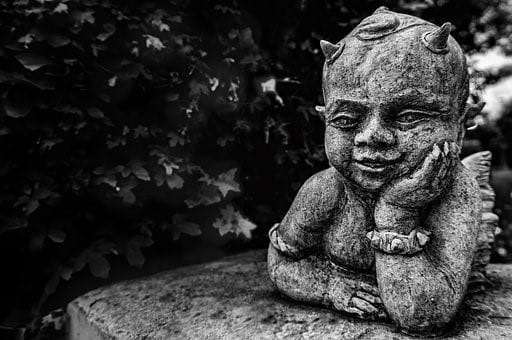Fairy, faun, demon, incubus, when this medieval creature was not crushing a sleeping victim
beneath its terrifying weight, it might have been out on the town seducing the most eligible of
women. Invisibly at that. When medieval cleric Gervase of Tilbury mentions incubi in his work Otia Imperialia, he speaks of people who “claim to have seen Silvani and Pans”, linking
supernatural spirits to nature gods (729), and though he makes no argument whether such spirits or fairies can somehow mate with humans, he does concede that there are accounts of men having taken such beings as lovers (731). However, what of the women visited by incubi,
whether welcome or not, and the outcomes of those tales of seduction that can’t be denied due to a more physical reason?
 According to scholar Richard FirthGreen, not only were there accounts of
According to scholar Richard FirthGreen, not only were there accounts of
women being seduced by mysterious,
beautiful young men possessing the
ability to both render themselves
invisible and pass-through walls, but the
supernatural lover was often considered
responsible for impregnating women.
This incubus, often richly clothed,
would proffer expensive gifts in
exchange for intimate relations with the
object of his affection. Still, it was one
matter to have a rumored affair with
such a supernatural being and another
entirely to blame a pregnancy on one.
Why would a medieval pregnant
woman point to a fairy as the father of
her child?
In truth, an unexplained pregnancy in the Middle Ages could spell trouble and not just for the
mother’s reputation and marriage prospects. Illegitimate children were considered morally
repugnant by the Church and looked down upon in society. Despite the Church’s assertions that demons could not reproduce, the idea of fertile fairies continued within popular belief, and for a woman to say that a fairy was the father of her unexplained child was a “convenient way to account for any pregnancy” (Green 84). Green gives an example of the story of Saint Marina, a woman who entered a monastery and disguised herself as a monk (84). Sent outside the walls once on an errand to an inn, she soon found herself accused of having fathered the child of a brewer’s daughter. When it is later revealed that she is a woman, the girl in question chooses to redirect her blame to a “wild woodwose” (Green 84), a type of wild man or faun-like creature. As Green says “…it was fair game for people to ascribe an unexplained pregnancy (like other deviations from the social norm—sudden wealth, an unconventional marriage, a conspicuously beautiful or erudite woman, or a mysterious disappearance) to the intervention of fairy agency” (84).

Women could hardly be expected to fend off a supernatural being that no one else could see and since fairies were thought to be insubstantial and ‘from the air’ instead of flesh, some women even asserted that their virtue was still intact and they had “lived without knowing a man” (Green 88). In fact, fairy paternity was not so uncommon a trend. Even the celebrated Merlin of lore was said to have been the child of a mortal woman and an incubus, and if such a union created the famed prophet why not the child of the brewer’s daughter too?
By Alanna Davey
Bibliography
-Gervase of Tilbury. Otia Imperialia: Recreation for an Emperor, Book III, Edited and translated by S.E. Banks and J.W. Binns, Clarendon Press, Oxford, 2002.
-Green, Richard Firth. Elf Queens and Holy Friars : Fairy Beliefs and the Medieval Church.
University of Pennsylvania Press, 2016.
